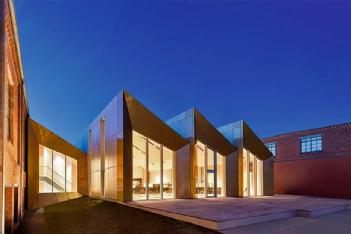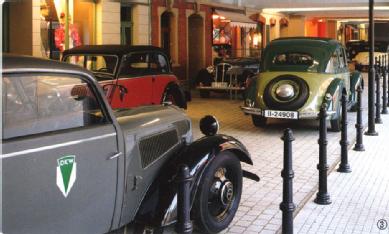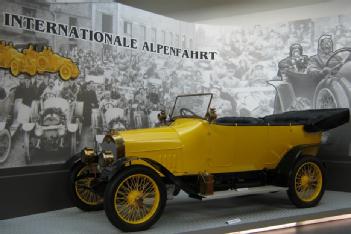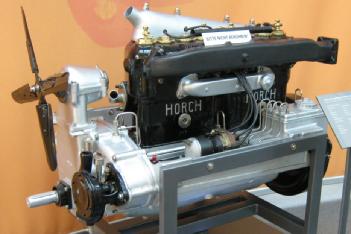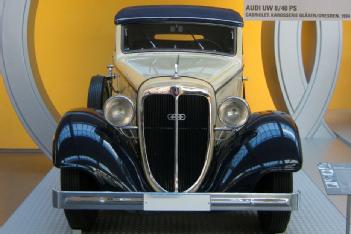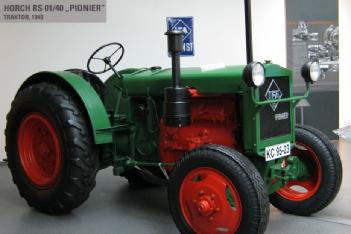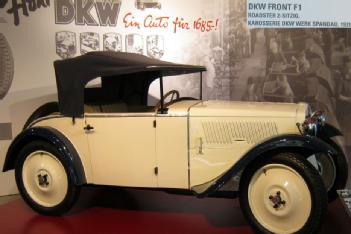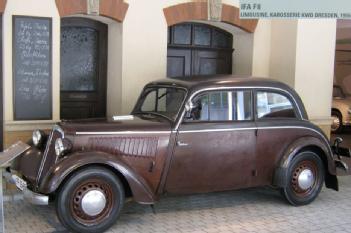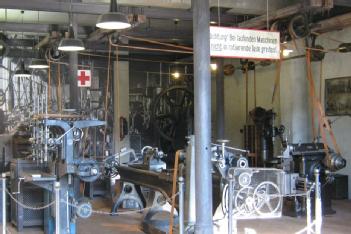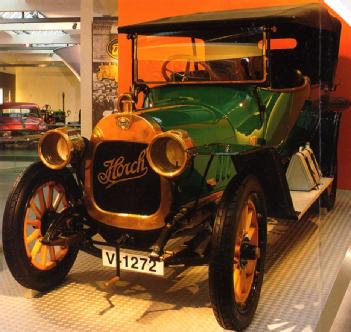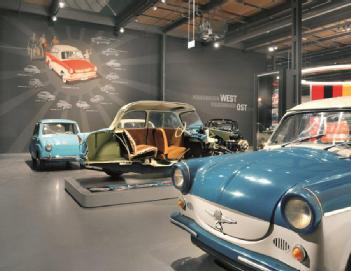| Description
|
Text Wikipedia.de 8/2011 by autotranslator:
The August Horch Museum Zwickau is a technology museum, which documents the history of the West Saxon automobile. August Horch name it bears, the engineer, designer and founder of Horch Zwickau and Audi works.
The museum is housed in a historic complex of the former Audi works housed since 1958 were the work of Part II of the VEB Sachsenring Zwickau Automobile Works. It houses an extensive collection of automotive past eras up to buy Volkswagen. In the Audi factory, where they once produced the two-stroke auto-union of the F-Series, was also the final assembly of the "GDR-car" Trabant.
On 12 December 2000, the nonprofit founded by August Horch Museum Zwickau gGmbH, where the city of Zwickau and Audi AG, the shareholders are equal. Franz-Josef Paefgen, then chairman of Audi AG, said that day: "Our history should remain visible in Zwickau. The diverse history of our company means we have a special obligation to the public. "
The groundbreaking ceremony took place on 27 September 2001 after 800 participants of an architectural competition for a design incorporating the historic structure had competed. Thus began the reconstruction of part of the factory building and the construction of a new visitor reception building. This includes listening villa, apartment and office building that the company founder. Ended after three years of construction on 10 September 2004 with the opening of a sixteen years of interim facility. The inauguration took place in the year of the centenary of the founding of the "Horch & Cie. Motor-Werke AG, Zwickau. " Carl H. Hahn, former CEO of Volkswagen AG, said at the opening: "Our new Zwickau Automobile Museum is a showcase in Saxony as it was hardly built in a different region of Germany in the past 100 years."
With an exhibition area of 2,500 sqm approximately 70 major exhibits of historical brands Audi, DKW, Horch and Wanderer are shown. The visitor learns not only the life and work of August Horch know, but also the history starting at the origin of Saxony's automotive industry with the founding of the Saxon-Thuringian Automobile Club in 1903, its continuation by the Established in 1932 Auto Union up to the VEB Sachsenring and Volkswagen. Part of the exhibition is the impact of the Second World War and the difficult new life in the Soviet Occupation Zone and the GDR dedicated. With exhibits, e.g. the truck H3A, the Horch P240, the last Horch ever built, to the East German car "Trabant", is shown that the employees of the "state-owned enterprise" despite innovative development services chanceless Günter Mittag, "the SED's economic experts "Politburo, were facing.
A special feature of the museum is the exhibition of the exhibits in the context of each era. For example, an open street scene for the museum visitor (retail shops, vehicles parked in front of the DKW F-series) from the thirties is adjusted. On certain days of August Horch said "personally" in a demonstration of the practical operation of an original eight-cylinder engine listening on a dynamometer with Water brake.
The museum is an anchor point on the European Route of Industrial Heritage. |





 horch-museum.de
horch-museum.de 
